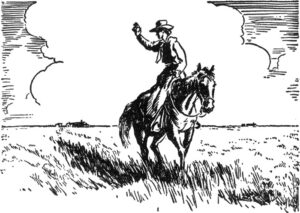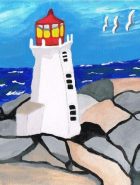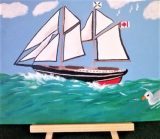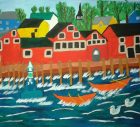Stephen J Voorhies…
Stephen J Voorhies: Tribute to an Artist of the American People — and Places
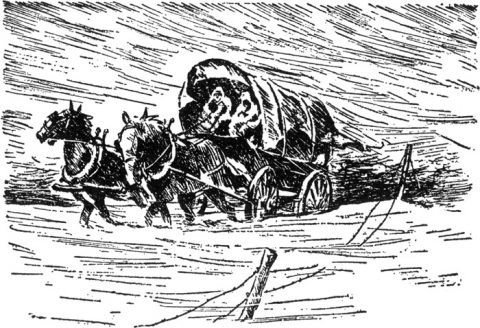
As an avid collector of classic wilderness fiction, including the stories of our Canadian Mounties, I’ve been lucky enough to find a lot of the must-read titles I’ve hunted. Old pulp magazines are the hardest to find, often impossible — or way too expensive.
Recently, I’ve discovered all three editions of William Byron Mowery’s short fiction collections. THE LONG ARM OF THE MOUNTED appeared in 1948. SAGAS OF THE MOUNTED POLICE was published in ’53 and reprinted nine years later in paperback.
Cover and interior artwork is important. Especially for genres that have an outdoor setting. Like Westerns. And Northwesterns.
I really liked the cover art and line illustrations for THE LONG ARM OF THE MOUNTED. “Who,” I wondered, “is Stephen J Voorhies?”
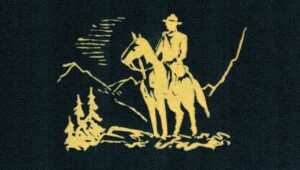
After a bit of Net search, I found out…
Stephen J Voorhies was a popular muralist, pictorial mapmaker, book illustrator and painter active from the 1920’s well into the 1960’s.
Of Dutch descent, he was born in 1898 and grew up in the New York area. After serving in the U. S. Navy, Voorhies attended the Pratt Institute in the Clinton Hill area of Brooklyn, studying Art and Design. Graduating in 1922, he quickly earned a reputation as an artist able to work in any medium.
He eventually established a permanent residence at 136 Linden Street, Rockville Centre, Long Island. But maintained a separate studio at 303 West 42nd Street in Manhattan. His wife, Dorothy Townsend Voorhies, was an accomplished book illustrator and fashion designer in her own right. They had two daughters, Barbara Anne and Ruth. Stephen J Voorhies was listed in both the Who Was Who in American Art, and Salons of America.
The artist loved the then-popular concept of pictorial maps and murals — filled with busy scenes of trade, industry and the bustle of rural and town life.
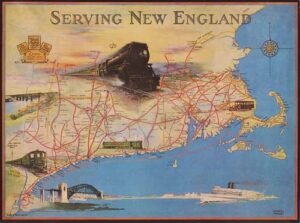
In 1928, Rand McNally hired him to produce a pictorial map of New England, featuring shipping, railway and bus lines. “Compared with pictorial maps of the time, this one was relatively conservative in color and design. But the steam locomotive blasting out of western Massachusetts gives the map considerable drama.” [1] Good reviews of this map led to commissions for more high-profile commercial works.
And in 1929, he produced an oil painting on canvas titled Cabin in Sand Dunes with Trees in Background.
If Voorhies had hoped for an art gallery success, he was disappointed. Most of his watercolors and oil paintings would be produced later in life.
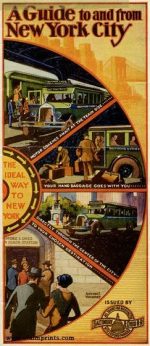 In 1930, Baltimore & Ohio Railroad published Voorhies’ A Guide To And From New York City. The pamphlet opened up to reveal two small color maps, and a large map with “pictographs of key buildings and bridges and including a listing of Point of Interest, Hotels, Theatres, and Principal Steam Lines in left margin.”
In 1930, Baltimore & Ohio Railroad published Voorhies’ A Guide To And From New York City. The pamphlet opened up to reveal two small color maps, and a large map with “pictographs of key buildings and bridges and including a listing of Point of Interest, Hotels, Theatres, and Principal Steam Lines in left margin.”
In 1936, he released his decorative illustrated map Historic Long Island. “A Map showing its Towns & Villages and the Outstanding Events during its Development over a period of more than Three Hundred Years.”
The outer green border displayed the names of “the thirteen tribes of Indians who were the first proprietors of Long Island.”
He was commissioned to do three murals for the 1939 “World of Tomorrow” World’s Fair at Flushing Meadows, New York. Those painted murals depicted the pastoral elements of the East Coast: its thriving agricultural and fishing industries.
One of his most popular was his vibrant Pictorial Map of Historic Nassau County. Which illustrated “a number of towns. As well as the Grave of Theodore Roosevelt, Old Paper Mill, Onderdonk Grist Mill, Roosevelt Field, Mitchell Field, Mineola Court House, Adelphi College, Garden City Hotel, Nassau County YWCA, St. Georges Church and Rock Hall.”
The map was printed in RECIPES FROM HISTORIC LONG ISLAND collected by the Young Women’s Christian Association of Nassau County in 1948.
In 1949, he designed the New York City Subway map.
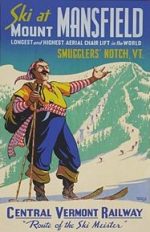 Through the 1940’s and 50’s he created a series of commercial posters for the Central Vermont Railway, featuring the Mount Mansfield ski resort at Smuggler’s Notch, Vermont.
Through the 1940’s and 50’s he created a series of commercial posters for the Central Vermont Railway, featuring the Mount Mansfield ski resort at Smuggler’s Notch, Vermont.
His most popular Mount Mansfield posters centered on a continuing character. A happy-go-lucky French Canadian smuggler passionately celebrating the forested mountains around him. You can almost hear his echoing voice, “Le Bon Dieu, I so happy I t’ank You who made thees world so magnifique!”
Voorhies’ Mount Mansfield silkscreen prints still sell at auctions.
He created advertising illustrations for other commercial enterprises. These included cover paintings for Bell Telephone Company’s Telephone Review employee magazine, which are highly collectible today.
His artwork appeared in magazines such as Fortune and Liberty.
And in hardcover books, many with historic, wilderness or rural settings. [2]
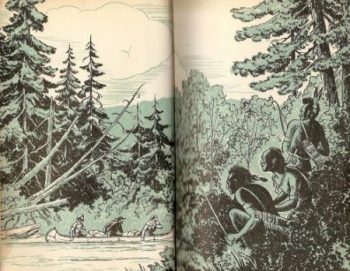
One best selling book featuring Voorhies’ artwork was THE EXPLORATIONS OF PÈRE MARQUETTE by Jim Kjelgaard, Random House, 1951.
Kjelgaard’s book told the story of French Jesuit Père Jacques Marquette. A missionary and explorer, who had been sent to New France (the modern day Canadian province of Quebec). From 1667 to 1675, he would journey (mostly by canoe) through the Great Lakes country and down many rivers. He explored that part of the New World and spread the teachings of Jesus among the many First Nations the energetic Black Robe encountered.
Another popular book was LAND OF THE BURNT THIGH by Edith Eudora Kohl. (See Voorhies’ Horses and Covered Wagon illustration top of this page. And Frontier Farewell at bottom of page.) Published in 1935, Kohl’s memoirs of homesteading near the Lower Brule Indian Reservation of South Dakota in 1907 has become a classic of homesteading history.
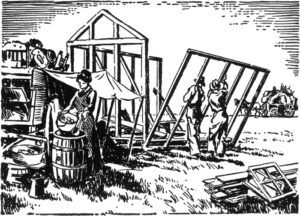
Within a few weeks of arriving, “Edith was running a newspaper, her sister Ida Mary was teaching school. And the two were helping others who had come to settle. In the following months, they battled prairie fires, rattlesnakes, and a blizzard. They observed two great land rushes. They staked a new claim, opened a post office and a general store. And overcame their fear of the Indians who came to trade with them.”
Voorhies’ many book illustrations rarely showed scenes of graphic violence. But instead showed people hard at work and getting on with their lives in rural, small town and occasionally big city locations.
His love of outdoor and frontier themes certainly showed in his artwork for the first edition of William Byron Mowery’s masterful collection.
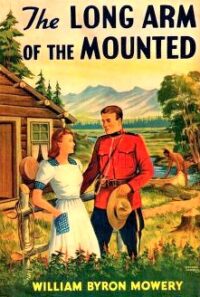 THE LONG ARM OF THE MOUNTED, presenting four of William Byron Mowery’s best Mountie novelettes, was first published in 1948 as a McGraw-Hill hardcover.
THE LONG ARM OF THE MOUNTED, presenting four of William Byron Mowery’s best Mountie novelettes, was first published in 1948 as a McGraw-Hill hardcover.
Voorhies painted a domestic scene with the Mountie in his bright red serge saying his goodbyes to his sweetheart in her simple blue and white dress. His native Canadian scout in the background is preparing for their mission.
The scene from the novella “The Mystery of the Ghost Gold” however was more emotion-wrought than portrayed. Sgt David Kirke had already sent Esther Shannon to trial on a murder charge. Found not guilty due lack of evidence, she held the Mountie in contempt.
But Kirke was still searching for the truth of the case. With his Police Scout Itai-Po he was setting out on a long, dangerous hunt. Into country described as “when the Lord got finished creatin’ the earth, He hadda lot of rocks, water, broken mountains, and big timber left over. So He just chucked it all into that region to get shut of it, and that’s what makes it so wild.”
In later years, Voorhies produced a number of oil and watercolor & gouache paintings, mostly landscapes.
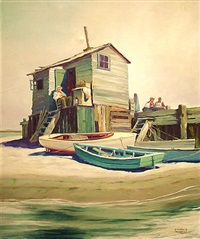 Such as the evocative Ebb Tide (Left).
Such as the evocative Ebb Tide (Left).
Others were Eaton’s Neck Light, Montauk Light, Dramatic Navy Helicopter Water Rescue, Seated Woman in Yellow Dress Next to a Bouquet of Flowers, View of the Front of Stone House at Christmas, Desolate Railroad Station House in a Wooded Yard with Fence and Woman Descending Hill on Sled that is Falling Apart.
As well as the simple but subtly mystical Sand Compass.
“Stephen J. Voorhies’ works have gone up for sale at public auction 15 times, mostly in the Drawing-Watercolor category. The oldest online auction recorded is for Making the Connection from Train to Bus en route to New York presented in 2003 at Illustration House (Drawing-Watercolor). And the most recent is for the artwork Montauk Light presented in 2016 at Artnet (Painting).” – Artprice.com

“Live Free, Mon Ami!” – Brian Alan Burhoe
Did You Enjoy This Post?
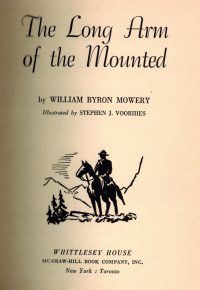 IF SO, YOU’VE GOT TO SEE “THE WRITERS OF THE NORTH-WEST MOUNTED POLICE” — MY MOST POPULAR LITERARY HISTORY POST:
IF SO, YOU’VE GOT TO SEE “THE WRITERS OF THE NORTH-WEST MOUNTED POLICE” — MY MOST POPULAR LITERARY HISTORY POST:
“Thanks for a wonderful in-depth article on Mountie fiction. I’m a big fan of the Mounties and I really enjoyed the amount of details you provided and found many, many more books to put on my wish list.” Jack Wagner
“Hello! I have a question for you… First though, what amazing, detailed information you’ve got here, thanks for it!” HG
When our Canadian Mounted Police first arrived in the lawless Wild West, they soon entered our National Mythology. A look at the many writers who helped create that Proud Mythology. Including William Byron Mowery. And richly illustrated with vibrant book and magazine covers. FREE TO READ The GREATEST AUTHORS OF NORTH-WEST MOUNTED POLICE FICTION
[1] Stephen J Hornsby, PICTURING AMERICA: The Golden Age of Pictorial Maps, University of Chicago Press, 2016
[2] A list of some other books illustrated by Stephen J Voorhies…
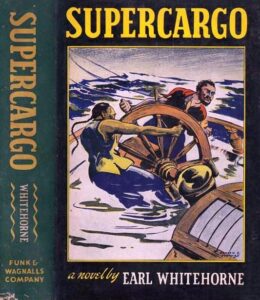
SUPERCARGO by Earl Whitehorne
ENTERTAINING WITHOUT A MAID by Elizabeth Lounsbery
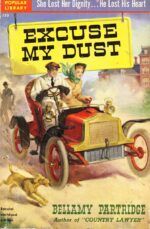 EXCUSE MY DUST by Bellamy Partridge
EXCUSE MY DUST by Bellamy Partridge
FOR HERE IS MY FORTUNE by Amos R Harlin
HEATHER HILL by Elleston Trevor
MAIN STREET MERCHANT by Norman Beasley
SIX GREAT MEN OF BRAZIL by Vera Kelsey
THE ANTARCTIC OCEAN by Russell Owen
THE COMING OF THE MORMONS by Jim Kjelgaard
THE EARTH IS OURS by Marion Pedersen Teal
THE GENERAL’S BOOTS by Neta Lohnes Frazier
THE MEDITERRANEAN: The Saga of a Sea by Emil Ludwig
THE MUDHEN ACTS NATURALLY by Merritt Parmelee Allen
FISHING BEHIND THE EIGHT BALL: An Angler’s Problems in Many Parts of the World by Harlan Major
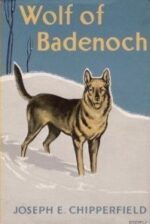 WOLF OF BADENOCH: Dog of the Grampian Hills by Joseph E Chipperfield
WOLF OF BADENOCH: Dog of the Grampian Hills by Joseph E Chipperfield
YANKEE STOREKEEPER by R E Gould
THE PACIFIC OCEAN by Felix Riesenberg
BASIC FISHING: From the Worm to the Fly by Harlan Major
BIG FAMILY by Bellamy Partridge
CASSEROLE MAGIC: 300 Recipes for the Best in One-Dish Meals by Lousene Rousseau Brunner
CLEAR THE TRACKS: Story of an Old Time Locomotive Engineer by Joseph Bromley
COUNTRY LAWYER by Bellamy Partridge
G-I’VE BEEN AROUND: The G-I’s Own Commemorative Record of His Gallant and Victorious Achievements in World War II by Douglas Haight and Stephen J. Voorhies
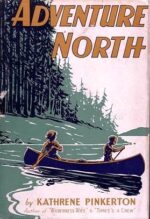 ADVENTURE NORTH by Kathrene Pinkerton
ADVENTURE NORTH by Kathrene Pinkerton
DEEP WOOD by Elleston Trevor
HORSE TRADER: The Story of a Real David Harum by Earl Conrad
FOOTLOOSE FIDDLER by Harry Miller and Page Cooper
TEXAS: A World In Itself by George Sessions Perry
HERE’S ENGLAND: A Highly Informal Guide by Ruth McKenney & Richard Bransten
ENJOYING THE CATSKILLS by Arthur Mack
THE MYSTERY IN THE JEEP by Ernie Rydberg
SOURCE: Minnesota Historical Society Press, AbeBooks & Project Gutenberg.
WANT TO READ MY ARTICLES ON YOUR MOBILE CELLPHONE OR TABLET? Go to my Mobile-Friendly BrianAlanBurhoe.com…
Stephen J Voorhies: Artist of the American People — and Places. Updated Feb 24, 2024.
